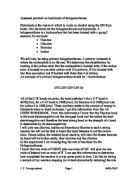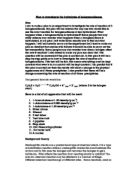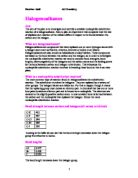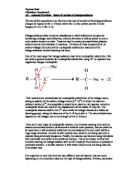Hydrolysis of halogenoalkanes.
The aim of this experiment is to investigate the rate of hydrolysis of
-chlorobutane, 1-bromobutane, and 1-iodobutane.
Method
For this experiment I will need the following apparatus: -
- 3 test tubes
- aqueous silver nitrate solution
- 1-chlorobutane
- 1-bromobutane
- 1-iodobutane
- pipette
- Ethanol
- Stop clock
* For this experiment firstly measure out 2.6cm3 of 1-chlorobutane using a pipette. Then for 1-bromobutane measure out 2.7cm3 and finally measure out 2.8cm3 of 1-iodobutane and put them all in their separate test tubes.
- The reason for using a pipette is that this is the most accurate way to measure out exact quantities of the haloalkanes.
The aim of this experiment is to investigate the rate of hydrolysis of
-chlorobutane, 1-bromobutane, and 1-iodobutane.
Method
For this experiment I will need the following apparatus: -
- 3 test tubes
- aqueous silver nitrate solution
- 1-chlorobutane
- 1-bromobutane
- 1-iodobutane
- pipette
- Ethanol
- Stop clock
* For this experiment firstly measure out 2.6cm3 of 1-chlorobutane using a pipette. Then for 1-bromobutane measure out 2.7cm3 and finally measure out 2.8cm3 of 1-iodobutane and put them all in their separate test tubes.
- The reason for using a pipette is that this is the most accurate way to measure out exact quantities of the haloalkanes.







